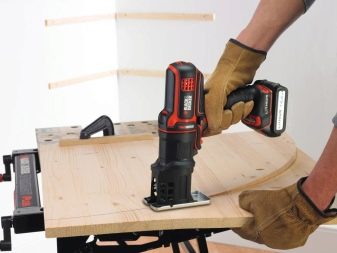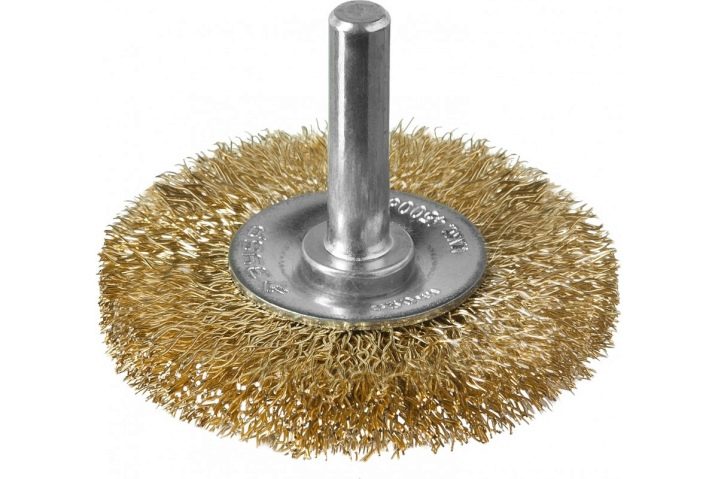Choosing wood drill bits

Despite the fact that drills are most often used for drilling holes in wood, they can successfully cope with other equally important tasks. The solution of the latter involves the use of attachments for working with this material - special devices that significantly expand the capabilities of the master. To achieve the best result, it is enough to know the basic rules for the operation of such products and choose those of them that best suit the specifics of the situation.

Characteristics of nozzles
Due to the impressive number of varieties of the described accessories for the drill, the latter can be called one of the most versatile tools. In particular, by means of attachments, high-quality grinding of various surface areas is carried out - even those that are very difficult to reach. In addition, by means of such products it is very convenient to clean up miniature parts that require the utmost care from the performer.
Another reason for the popularity of woodworking accessories is the tangible cost savings. Practice shows that these devices allow solving the overwhelming majority of the assigned tasks, effectively replacing a specialized and very expensive tool. Another notable feature of drill bits is the possibility of making them yourself (provided that the master pays due attention to the balance of the fixtures and the quality of the materials used).
As for the reasons that may impede the use of the described products, these include low productivity in comparison with a professional tool and the need for the performer to have certain skills. In addition, many craftsmen consider attachments less convenient than specialized equipment for woodworking.



Views
In order for the acquired nozzle to meet the expectations of its owner, the latter should familiarize himself in detail with the classification of such products - both by the type of work carried out with their help, and by the specifics of the design.
By appointment
Depending on the characteristics of the operations performed, the following types of the described products are distinguished.
For grinding
This type of attachment allows you to give the desired appearance to the treated surfaces and involves the use of highly effective abrasive materials. The latter are most often silicon carbide, aluminum oxide and synthetic diamond. The material responsible for wood processing can be glued to the working surface of the attachment and applied to a paper or fabric base.


For milling
Such devices are designed to solve a wide range of tasks - in particular, high-quality alignment of grooves and work with end edges of workpieces. If the master has auxiliary supports and attachments, he can turn the drill into a full-fledged equipment for milling wood.



For polishing
The considered type of attachments in many ways resembles a grinding one, differing from it in the specificity of the filler used.The material of the latter is distinguished by its softness (as a rule, it is foam rubber or thin dense felt), due to which such devices are successfully used for fine processing of wooden surfaces.


For stripping
The solution to this problem involves the use of nozzles called brushes. Such products are most often made of rigid wire and are used to eliminate the remnants of paint and varnish materials and in other situations requiring the surface to be brought into proper condition. They are suitable for roughing operations before grinding and other “fine” operations.


For cutting
The described type of fixture is complex and expensive, and working with it resembles the use of an electric jigsaw. Such attachments do a good job of cutting wood, the thickness of which reaches 2 cm, as well as chipboard and plywood. Special attention should be paid to the versatility of the products under consideration, which allows them to be used for cutting other materials - first of all, artificial polymer compounds and some alloys.


For working with self-tapping screws
For working with self-tapping screws This is the simplest type of attachments used with drills that can work at reduced speeds. Manufacturers often offer kits that include bits with different diameters, which allows them to be used with most self-tapping screws.
You can also buy bits that are used to create large holes and flexible drills that allow you to get to any hard-to-reach place. Such devices are used relatively rarely, and therefore not every specialized store is engaged in their implementation.


By design
To date, there are many nozzles for wood processing, which differ markedly in shape and other features of their structure. The most popular of them can be found below.
Plate
They are presented in several variations, performed with the use of various abrasive materials. For sanding wood, rubber and plastic attachments are most suitable, and for polishing it is justified to use products with a fine-grained sandpaper surface. There are also devices that allow you to change the angle of the abrasive attachment rod.

Drum
In most situations, they are used for high-quality machining of holes and end sections of workpieces. Such attachments look like barrels of regular cylindrical shape, to the surface of which an emery tape is attached. Drum-type products allow you to grind wood without any difficulty, which is especially important for round or oval holes.

Cup
These tools are well suited for removing old paint and other procedures that involve roughing wood surfaces. The attachments in question are a bowl with a tightly fixed brush made of wire or abrasive nylon. To choose the right option, the master should take into account the degree of surface treatment that needs to be achieved.


Disk
They are a variety of products discussed in the previous paragraph. The key difference between disc nozzles and cup nozzles is the diametrical arrangement of the villi, which makes it possible to process wood in the most inaccessible places.

Petal
The design of these nozzles, also called fan-shaped, assumes the presence of a rod to which many emery sheets are attached. These attachments are ideal for radius grinding and finishing applications. In addition, flap devices are justified to use for accurate processing of workpieces with a complex surface.

End
Products belonging to this variety may have significant external differences and be made from different materials.Most often they are used to perform the initial or final stage of machining holes and the inner surface of workpieces with complex shapes.

Soft
These attachments are characterized by minimal wear resistance and are therefore only suitable for surface polishing. The most popular are devices made of foam rubber, felt and leather, which have a round shape and are securely fixed on the axis.

As for milling with a drill, it is carried out through the use of cones - special nozzles made of hard alloys. The choice of a specific type of these devices is determined by the specifics of the problem for which they are used. So, to obtain neat grooves in the workpiece, it is rational to use disk cutters, and it is advisable to "entrust" the execution of complex cuts to shaped-type cutters. It is also worth considering the shape of the teeth of the purchased product, on the basis of which it can be undercut or pointed. Experience shows that both varieties do a good job of their duties, however, the former allow more resharpening than the latter.
Also worth mentioning are the attachments designed for cutting large holes. These include pen drills that have a flat cutting part and are optimally suited for solving the above problem. With these devices, you can work with wood, plywood, chipboard and oriented strand boards, cutting round holes with a diameter of 35, 50 and even 60 mm. In addition, Forstner drills with a centering point and drill bits with multiple cutting teeth and allowing holes up to 100 mm in diameter are suitable for this task.

Features of choice
Considering the impressive number of wood processing accessories on the market, special attention should be paid to the basic rules for their selection.
- Depending on their origin, the purchased products can vary significantly in quality, which affects the effectiveness and duration of their use. Professionals advise against buying low-grade attachments in favor of products from trusted manufacturers, which fully justify their cost.
- When choosing a suitable device, the performer must take into account the main characteristics of the drill he uses - power, cartridge features and the ability to change the rotational speed. If the purchased attachment does not fully match the instrument used, it will be much more difficult to achieve the desired result.
- In order to find the right attachment for a drill, it is reasonable for a novice performer to seek help from a competent employee of a specialized store. This step allows you to save time and get at your disposal a product that best suits the conditions of the task at hand.

It should also be borne in mind that individual attachments allow you to work not only with wood, but also with other materials in demand - for example, glass or ceramics.
Operating tips
When processing wood with nozzles using a drill, the contractor must adhere to the following requirements.
- The device used must be securely attached to the chuck. In the presence of any, even minimal backlash, work cannot be started.
- One of the key conditions, taking into account which allows you to avoid injuries and other troubles, is the mandatory fixation of the workpiece being processed.
- While working, it is advisable to hold the drill with both hands, which is especially important for powerful equipment.
- If the performer wants to turn on the reverse, he needs to wait until the instrument in use has come to a complete stop.
- When processing wood, special attention should be paid to pressure. It should be pretty strong, but not overwhelming.


At the end of the work, you must wait for the nozzle to cool for a few minutes. You should not touch it during the specified time period (you can burn your fingers).
In addition, the performer should not feel discomfort from small particles that fill the space of the room when working with wood. Inhaling them is strongly discouraged, which justifies the use of a respirator - an inexpensive and highly effective personal protective equipment. Also, do not neglect the glasses, which negate the likelihood of foreign objects getting into the eyes. This advice is especially relevant in situations where processing is done with wire brushes.


In conclusion, we can confidently state that using drill bits for working with wood is worth everyone who appreciates their strength and time. Such products have many obvious advantages with a minimum number of disadvantages, and therefore are suitable for the vast majority of performers.
For one of the woodworking attachments, see the next video.













The comment was sent successfully.